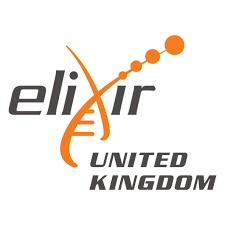GtoPdb is requesting financial support from commercial users. Please see our sustainability page for more information.
Contents:
- Gene and Protein Information
- Previous and Unofficial Names
- Database Links
- Natural/Endogenous Ligands
- Agonists
- Transduction Mechanisms
- Expression Datasets
- Physiological Functions
- Physiological Consequences of Altering Gene Expression
- Clinically-Relevant Mutations and Pathophysiology
- Biologically Significant Variants
- General Comments
- References
- How to cite this page
Gene and Protein Information  |
||||||
| class A G protein-coupled receptor | ||||||
| Species | TM | AA | Chromosomal Location | Gene Symbol | Gene Name | Reference |
| Human | 7 | 319 | 6q27 | GPR31 | G protein-coupled receptor 31 | 7 |
| Mouse | 7 | 319 | 17 A1 | Gpr31c | G protein-coupled receptor 31, D17Leh66c region | |
| Rat | 7 | 319 | 1q11 | Gpr31 | G protein-coupled receptor 31 | |
Previous and Unofficial Names  |
| 12-HETER | HETER1 | hydroxyeicosatetraenoic (HETE) acid receptor 1 | 12-(S)-HETE acid receptor | G protein-coupled receptor 31, D17Leh66c region |
Database Links  |
|
| Specialist databases | |
| GPCRdb | gpr31_human (Hs), gpr31_mouse (Mm) |
| Other databases | |
| Alphafold | O00270 (Hs), F8VQN3 (Mm) |
| ChEMBL Target | CHEMBL4523859 (Hs) |
| Ensembl Gene | ENSG00000120436 (Hs), ENSMUSG00000117239 (Mm), ENSRNOG00000039255 (Rn) |
| Entrez Gene | 2853 (Hs), 667359 (Mm), 292310 (Rn) |
| Human Protein Atlas | ENSG00000120436 (Hs) |
| KEGG Gene | hsa:2853 (Hs), mmu:667359 (Mm), rno:292310 (Rn) |
| OMIM | 602043 (Hs) |
| Pharos | O00270 (Hs) |
| RefSeq Nucleotide | NM_005299 (Hs), NM_001169132 (Rn) |
| RefSeq Protein | NP_005290 (Hs), NP_001162603 (Rn) |
| UniProtKB | O00270 (Hs), F8VQN3 (Mm) |
| Wikipedia | GPR31 (Hs) |
Natural/Endogenous Ligands  |
| 12S-HETE |
| Comments: Proposed ligand, single publication |
Download all structure-activity data for this target as a CSV file 
| Agonists | |||||||||||||||||||||||||||||||||||||||||||||||||||||||||||||||||||||||||||||||||||
| Key to terms and symbols | View all chemical structures | Click column headers to sort | |||||||||||||||||||||||||||||||||||||||||||||||||||||||||||||||||||||||||||||||||
|
|||||||||||||||||||||||||||||||||||||||||||||||||||||||||||||||||||||||||||||||||||
| Agonist Comments | |||||||||||||||||||||||||||||||||||||||||||||||||||||||||||||||||||||||||||||||||||
| 12-(S)-HETE is a 12-lipoxygenase metabolite of arachidonic acid, which produces a number of cellular responses including cytoskeletal remodeling to facilitate cell chemotaxis and secretion of proteinases and vascular endothelial growth factor leading to an angiogenic response. 12-(S)-HETE treatment of cancer cells alsoenhanced the expression of integrins and fibronectin,which prolong cell survival. GPR31 displayed high affinity binding for tritiated 12-(S)-HETE (Kd = 5 nM) and unlabeled 12-(S)-HETE stimulated GTPγS coupling in the membranes of GPR31-transfected cells, with an EC50 of 0.28 nM [2]. In concordance, GPR31 is phylogenetically closest to the OXE receptor (for which the ligand is 5-oxo-6,8,11,14-eicosatetraenoic acid) [1]. Unlabelled 12S-HETE effectively replaces the radioactive ligand bound to receptors, whereas 12R-HETE is unable to replace GPR31 bound 12S-[3H]HETE suggesting stereospecific binding [2]. |
|||||||||||||||||||||||||||||||||||||||||||||||||||||||||||||||||||||||||||||||||||
Primary Transduction Mechanisms 
|
|
| Transducer | Effector/Response |
| Gi/Go family | |
| Comments: 12S-HETE/GPR31 mediated ERK1/2 activation is inhibited by pertussis toxin, suggesting the involvement of Gi/o heterotrimeric G proteins [2] | |
| References: 2 | |
Expression Datasets  |
|
|
| Physiological Functions Comments | |
| Thought to exert an effect on innate immunity through cytokine IFN-γ [4], [6]. |
| Physiological Consequences of Altering Gene Expression Comments | |
| Knockdown of GPR31 using shRNA in transfected CHO cells diminishes specific binding of 12S-[3H]HETE [2]. |
| Clinically-Relevant Mutations and Pathophysiology Comments |
| Dominantly inherited cutaneous small-vessel lymphocytic vasculitis maps to chromosome 6q26-q27, making GPR31 (which also maps to the linked region) a plausible candidate for the disease based on biological function [6]. |
Biologically Significant Variants 
|
||||||||||||||||||
|
||||||||||||||||||
| Biologically Significant Variant Comments | ||||||||||||||||||
| An in-frame 210-bp deletion in GPR31 is observed in the mouse t complex responder locus responsible for transmission ratio distortion of mouse t haplotypes [5]. |
| General Comments |
| Clone AK036897 holds 50% identity with human GPR31 indicating that it may be a murine paralog of the receptor. However it is too short to encode a putative GPCR structure, indicating that the cDNA is likely to be a partial fragment [3]. 12S-[3H]HETE has been shown to bind to the BLT2 receptor with much lower affinity than that of GPR31. |
References
1. Gloriam DE, Fredriksson R, Schiöth HB. (2007) The G protein-coupled receptor subset of the rat genome. BMC Genomics, 8: 338. [PMID:17892602]
2. Guo Y, Zhang W, Giroux C, Cai Y, Ekambaram P, Dilly AK, Hsu A, Zhou S, Maddipati KR, Liu J et al.. (2011) Identification of the orphan G protein-coupled receptor GPR31 as a receptor for 12-(S)-hydroxyeicosatetraenoic acid. J Biol Chem, 286 (39): 33832-40. [PMID:21712392]
3. Kawasawa Y, McKenzie LM, Hill DP, Bono H, Yanagisawa M, RIKEN GER Group, GSL Members. (2003) G protein-coupled receptor genes in the FANTOM2 database. Genome Res, 13 (6B): 1466-77. [PMID:12819145]
4. Schaub A, Fütterer A, Pfeffer K. (2001) PUMA-G, an IFN-gamma-inducible gene in macrophages is a novel member of the seven transmembrane spanning receptor superfamily. Eur J Immunol, 31 (12): 3714-25. [PMID:11745392]
5. Schimenti JC. (1999) ORFless, intronless, and mutant transcription units in the mouse t complex responder (Tcr) locus. Mamm Genome, 10 (10): 969-76. [PMID:10501965]
6. Sellick GS, Coleman RJ, Webb EL, Chow J, Bevan S, Rosbotham JL, Houlston RS. (2005) Dominantly inherited cutaneous small-vessel lymphocytic vasculitis maps to chromosome 6q26-q27. Hum Genet, 118 (1): 82-6. [PMID:16133183]
7. Zingoni A, Rocchi M, Storlazzi CT, Bernardini G, Santoni A, Napolitano M. (1997) Isolation and chromosomal localization of GPR31, a human gene encoding a putative G protein-coupled receptor. Genomics, 42 (3): 519-23. [PMID:9205127]










